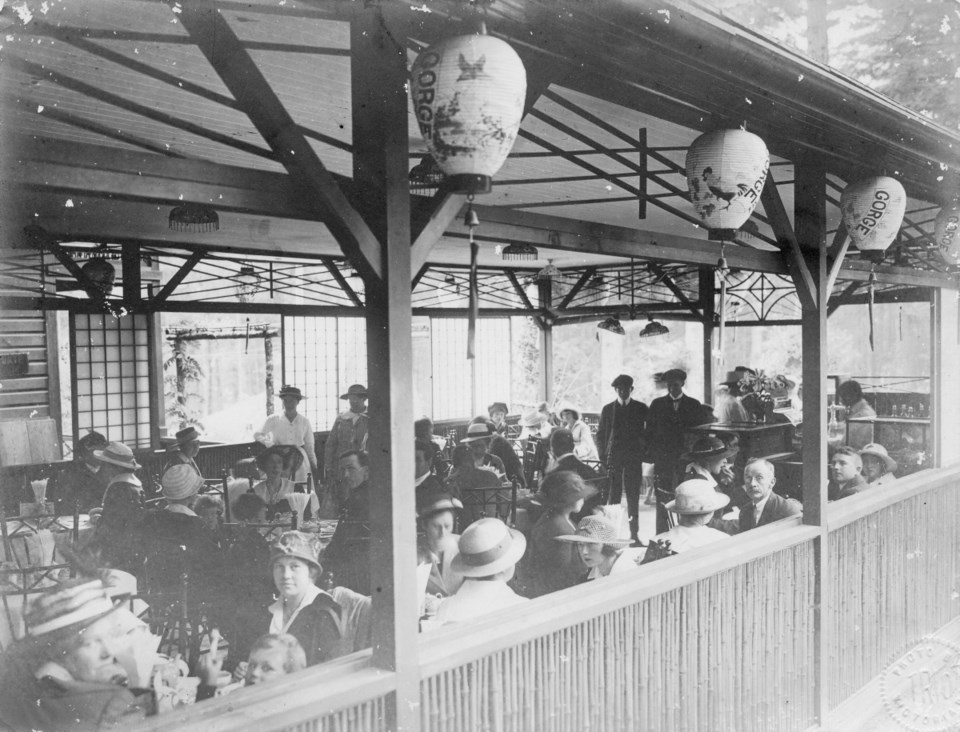In the coming months, Esquimalt city council has a historic opportunity. In front of councillors is the visionary proposal of the Victoria Nikkei Cultural Society to use the McLoughlin Amenity Funds to build a commemorative teahouse and community centre in Esquimalt Gorge Park.
The proposal offers Esquimalt a chance to define its present values by rectifying historic acts of erasure of both Japanese-Canadian and Indigenous history while offering new community facilities to its citizens.
The teahouse would benefit everyone. The cultural society has proposed a facility designed to commemorate the histories of the Esquimalt Gorge Park while also serving the recreational needs of the surrounding neighbourhoods. It would energize a beautiful but little-used park and, in conveying the story of the vanished tea gardens and of the Songhees and Esquimalt First Nations’ long-standing relations to the land, it would mark an important step toward reconciliation for Esquimalt Township.
Founded in Gorge Park in 1907 by Yoshitaro Kishida and Hayato Takata from Japan, the tea gardens were the first Japanese gardens in Canada. At their peak in the 1920s, tens of thousands of visitors strolled through their winding paths each year and dined in an open-air teahouse that served traditional English fare.
The Takatas capitalized on their expertise in Japanese gardening while tailoring the park to the North American taste of their clientele. In the face of pervasive anti-Asian racism, the Takata family created a vibrant social hub that enriched the lives of residents of all backgrounds. All the while, the gardens served as the foundation for the Takatas’ life in Canada.
This all came to an abrupt end when the Takata family — along with nearly 22,000 other Japanese Canadians — was forcibly uprooted, interned and dispossessed in the 1940s.
Recent documents uncovered by the University of Victoria’s Landscapes of Injustice project reveal that their former neighbours ensured there was no tea house to return to when internment ended. Esquimalt residents ransacked the former landmark. “Wanton destruction” devastated the tea gardens immediately after the Takata family was gone.
The forgotten history of the Japanese teahouse and gardens sits alongside the erasure of an even older history in the park. The whole Gorge was the site of oyster harvesting and salmon and herring fishing by the Songhees and Esquimalt people stretching back 2,000 years, and the shoreline is lined with archeological sites.
No place is more important to the local Indigenous People than the site under the Tillicum Bridge where, in their stories, the Transformer Haals (sometimes written Xehals) turned a girl and her grandfather into stone to protect the food wealth of the Gorge and Portage Inlet.
The story, as told by Songhees elder Jimmy Fraser to anthropologist Wilson Duff in the 1950s, relates that Haals saw a girl crying beside her grandfather at the narrows in the Gorge because she was hungry. After asking her about what she liked to eat, Haals stocked the inlet with her favourite foods and then turned the two into large boulders, creating a foaming rapid and reversing falls. Embedded in those people-turned-to-stone was some of the Transformer’s power so, before the advent of the cities of Esquimalt and Victoria, teens entering puberty would dive into the rapids and swim down to touch this girl named “Camosun,” absorbing some of that power, showing their bravery and preparing themselves for the journey to adulthood.
Camosun and her grandfather spiritually and literally protected the resources of the Gorge because they made it impossible for the pleasure and commercial fishing craft of immigrants to pass beyond the narrows. That is until June 1960, when Robert Southwell, proprietor of the Gorge Boathouse, dynamited the rocks to allow passage.
Gone were the reversing falls, the gate protecting the Gorge and, except for a short stump, the most spiritually potent site for the Songhees and Esquimalt people.
In March 1943, a citizen in Richmond wrote the local paper, criticizing their neighbours for their vandalism and destruction of Japanese Canadians’ belongings. The letter concluded that “wanton destruction is not a good quality to have develop in any community, and it would seem that something should be done … to put a stop to the behind-back vandalism that unfortunately marks this little town.” Today, we have a unique opportunity to address the role of local citizens in erasing these two historic landmarks from Esquimalt’s landscape and make a restorative gesture to start repairing some of the historic vandalism that marked our town.
A Tea House Community Centre could serve as a gathering point near where the old teahouse stood and tell the story of Camosun and the Takata family, as it offers the citizens of Esquimalt a new community centre on the eastern edge of the city. It would be a visionary step that defines how Esquimalt chooses to remember its past, as it defines the inclusiveness and diversity of Esquimalt today.
John Lutz chairs the University of Victoria Department of History, Dr. Jordan Stanger-Ross is project director of Landscapes of Injustice, Kaitlin Findlay is research co-ordinator of Landscapes of Injustice and Tsugio Kurushima is president of the Victoria Nikkei Cultural Society.



